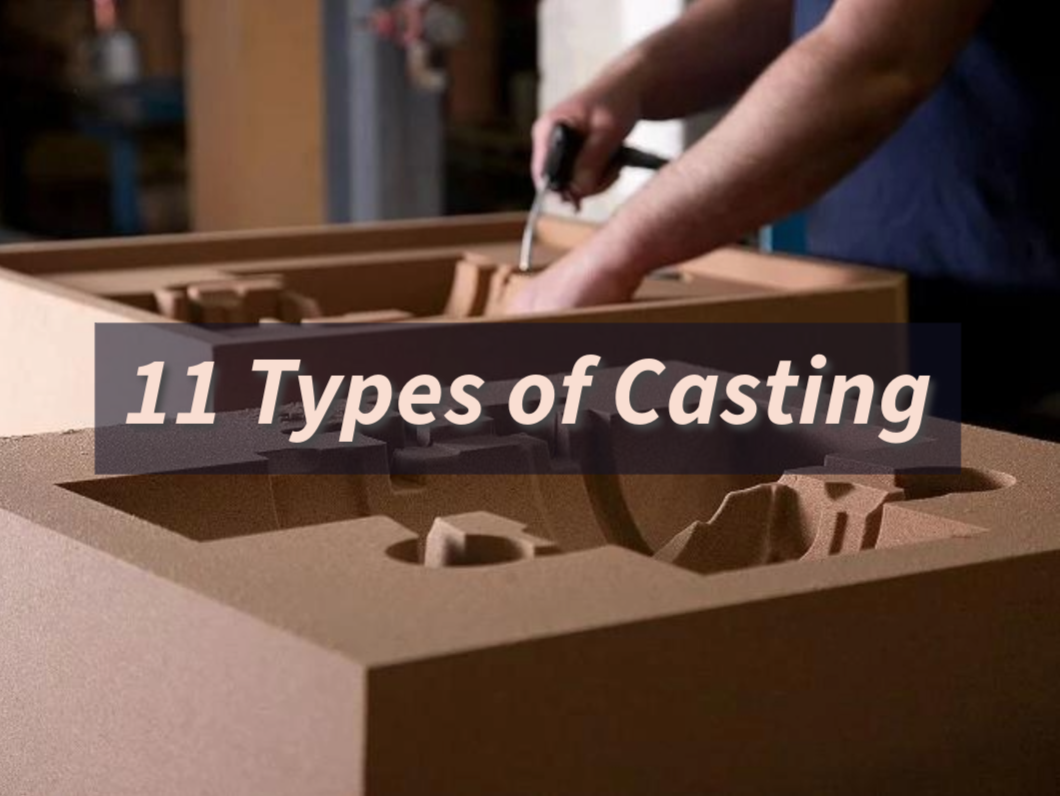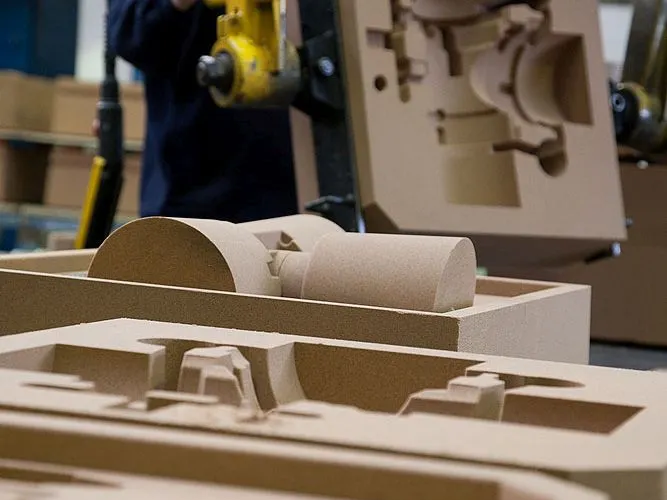Types of Casting: Which Process Is Right for Your Project?

This article will explore different casting methods like sand casting, vacuum casting, investment casting, die casting and so on.
Introduction
Casting turns ideas into solid forms by pouring liquids into molds to create precise shapes. Different techniques, like rapid, investment, sand, die, and centrifugal casting, offer distinct advantages based on the project’s needs.
This guide compares these methods and their uses. By understanding each process, you can choose the best one for your project, considering factors like material, size, and precision. With the right approach, casting can bring your vision to life.
What is Casting?
Casting is a process where molten metal is poured into a mold and allowed to harden into a desired shape. This technique is used to create a wide range of objects, from car parts to toys.
How Casting Works:
Mold Creation: A mold is made from a material like sand or clay, shaping the desired object.
Metal Melting: The metal is heated to a liquid state.
Pouring: The molten metal is poured into the mold.
Cooling: The metal cools and solidifies, taking the shape of the mold.
Removal: The mold is removed or broken to reveal the finished object.
Casting is essential in modern manufacturing due to its ability to create complex shapes efficiently. It's a valuable method for producing large quantities of objects.
Types of casting
1. Sand Casting
Sand casting is process where molten metal is poured into a sand mold and allowed to cool and harden.
Uses: Often used for large parts like engine blocks and machinery components.
Materials: Mainly metals such as aluminum, iron, and bronze.
Pros and Cons: It’s versatile and cost-effective for small production runs. However, it may not produce very detailed or smooth surfaces and requires cleaning and finishing.

Source: haworthcastings.com
2. Vacuum Casting
A method where a mold is created in a vacuum chamber to remove air and ensure a smooth, high-quality finish.
Uses: Ideal for producing high-precision parts in small quantities, like prototypes and detailed components.
Materials: Typically uses resins and sometimes metals.
Pros and Cons: Provides excellent detail and smooth finishes but can be expensive and time-consuming.

Source: rapidobject.com
3. Investment Casting
Also known as lost-wax casting, it involves creating a wax model, coating it with a ceramic shell, and then melting away the wax to leave a mold.
Uses: Common for intricate and high-precision parts like jewelry, aerospace components, and dental work.
Materials: Works well with metals such as steel, aluminum, and titanium.
Pros and Cons: Produces very detailed and complex shapes. However, it is costly and not ideal for high-volume production.

Source: dawangmetals.com
4. Die Casting (Metal Die Casting)
A process where molten metal is forced into a mold under high pressure.
Uses: Used for high-volume production of precise and complex parts like automotive and consumer goods.
Materials: Primarily aluminum, zinc, and magnesium alloys.
Pros and Cons: Offers high accuracy and good surface finish, but requires expensive molds and is not suitable for large or thick parts.

Source: fanovo.com
5. Gravity Die Casting
Metal is poured into a reusable mold under the force of gravity.
Uses: Suitable for medium to high-volume production of parts with moderate complexity, like engine parts and housings.
Materials: Commonly used with aluminum and zinc alloys.
Pros and Cons: Lower cost than pressure die casting, but can have lower dimensional accuracy and surface finish.

6. Continuous Casting
Metal is continuously poured into a mold to form long, continuous shapes that are then cut to the desired length.
Uses: Mainly used for producing billets, blooms, and slabs in steel and aluminum industries.
Materials: Primarily used for steel and aluminum.
Pros and Cons: Efficient for high-volume production, but less flexible for complex shapes and requires significant setup and maintenance.
7. Lost-Foam Casting
A method where a foam model is coated with a ceramic shell, then the foam is melted away, leaving a mold for molten metal.
Uses: Good for complex and high-precision parts, including automotive and industrial components.
Materials: Typically uses metals like iron, aluminum, and bronze.
Pros and Cons: Allows for complex designs and reduces the need for core removal. However, it can be costly and requires careful handling.
8. High/Low Pressure Die Casting
Similar to die casting but distinguished by the pressure used: high pressure for precision and low pressure for larger, thicker parts.
Uses: High-pressure die casting is used for small, detailed parts; low-pressure die casting for larger items.
Materials: Commonly aluminum, zinc, and magnesium alloys.
Pros and Cons: High-pressure casting provides high accuracy and surface finish; low-pressure casting can handle larger parts but might be less precise.
9. Centrifugal Casting
Molten metal is poured into a spinning mold, which uses centrifugal force to distribute the metal evenly.
Uses: Ideal for producing cylindrical parts such as pipes, rings, and wheels.
Materials: Suitable for metals like steel, cast iron, and bronze.
Pros and Cons: Results in strong, dense parts with minimal defects. However, it’s limited to cylindrical shapes and requires a rotating mold.
10. Squeeze Die Casting
A variation of die casting where metal is squeezed into a mold with high pressure to ensure a dense and high-quality casting.
Uses: Used for parts that need high strength and precision, like automotive and aerospace components.
Materials: Primarily aluminum and zinc alloys.
Pros and Cons: Produces high-quality parts with excellent strength, but requires specialized equipment and is more expensive.
11. Plaster Casting
A method where molten metal is poured into a mold made from plaster of Paris.
Uses: Often used for small, detailed items like jewelry and art pieces.
Materials: Typically uses non-ferrous metals like aluminum and bronze.
Pros and Cons: Provides good detail and surface finish but is not suitable for large parts and requires careful handling of the plaster mold.
How to Choose the Right Type of Casting for Your Project
Selecting the right type of casting for your project demands careful analysis of key factors to ensure optimal outcomes. Here’s how to approach the decision:
Material Compatibility
The casting method should match the material’s properties, like how hot it needs to be melted and how strong it should be after casting.
For example, investment casting works well for metals like stainless steel because it can handle high temperatures and make strong parts. On the other hand, die casting is better for metals that melt at lower temperatures, like aluminum and zinc.
Design Complexity
If your project has detailed designs or complex shapes, you’ll need a casting method that can capture those fine details.
For example, investment casting is great for making precise parts like turbine blades. In contrast, sand casting is better for simpler shapes, like engine blocks, where you don’t need as much detail.
Cost Considerations
Your budget will also influence your choice.
Sand casting is usually cheaper to start with and works well for smaller production runs. Die casting, while more expensive at the beginning, becomes more affordable for large-scale production because it works faster and costs less per part.
Production Volume
The number of items you need affects your decision.
For high-volume production, die casting is a good choice because it’s fast and produces consistent results, making it ideal for things like car parts. If you’re only making a small batch, investment casting or sand casting might be better since they don’t have high setup costs.
Surface Finish and Tolerances
Different casting methods give different surface finishes and levels of accuracy.
For example, investment casting creates a smooth surface that needs little finishing work, which is great for things like medical implants. On the other hand, sand casting might need extra work, like polishing or machining, to achieve the right finish for parts like gears or housings.
Innovations in Casting Technologies
Modern casting technology has greatly enhanced efficiency, precision, and sustainability.
Automation
Robots and computer systems now handle repetitive tasks in casting, speeding up production, reducing errors, and lowering labor costs.
3D Printing
This technology creates complex molds with high accuracy, speeds up prototyping, cuts down on waste, and allows for intricate designs that traditional methods can’t achieve.
New Materials and Eco-friendly Practices
Advanced materials like lightweight alloys and composites, along with recyclable molds and energy-efficient methods, have made casting more sustainable and improved performance.
Conclusion
In summary, each casting method has its own benefits depending on your project needs.
Whether you need the precision of automation, the flexibility of 3D-printed molds, or the sustainability of new materials, choosing the right method is crucial for quality, cost, and efficiency.
For the best results, consult a casting service provider or explore more about casting technologies. Understanding these methods will help you make the best choice for your project.
Unionfab: Your Partner in Precision Casting
Looking for high-quality, custom-made castings? Unionfab offers precision casting services tailored to your exact specifications.
From prototype development to large-scale production, trust Unionfab for your casting needs.
FAQs
What is the most cost-effective casting method?
The most cost-effective casting method depends on your project’s size and volume. For large parts and low-volume production, sand casting is often the most affordable. For high-volume production, die casting can be more economical over time.
Which casting process is best for intricate designs?
Investment casting is ideal for intricate designs because it offers high precision and the ability to create complex shapes with fine details.
How do I choose the right casting material?
To choose the right casting material, consider factors like strength, heat resistance, weight, and the intended use of the final product. Matching material properties to your project’s needs is key.
Is casting environmentally friendly?
Modern casting practices are becoming more eco-friendly through the use of recyclable materials, energy-efficient processes, and reduced waste. However, environmental impact varies depending on the method and materials used.

